What is Cloud? What are its advantages? #

What is Cloud?
- Scenario: Imagine you need to setup 100 servers for a website you are building. Can we rent instead of buy?
- Cloud: Rent computing, storage, database, and other services from companies like AWS, Azure, Google Cloud, .. – whenever you need them.
Cloud is On-Demand
- No Upfront Investment: No need to buy servers or data centers
- Faster Start: Launch apps in minutes, not months
- Pay-As-You-Go: Pay only for what you use

Cloud is Scalable
- Elastic - Scale Up/Down: Add or remove resources as needed
- Automatic Scaling: Many services scale based on demand
- Global Reach: Deploy apps closer to your users across the world
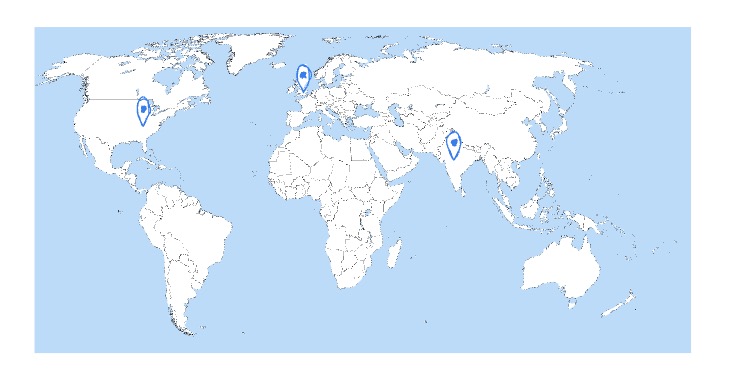
Benefits of Cloud
- Faster Delivery: Launch apps in minutes
- Cost-Efficient: Pay only for what you use
- Scalable: Auto-scale to handle traffic spikes
- Global: Deploy close to users, anywhere in the world
- Secure & Compliant: Built-in security and certifications
Region vs Zones vs EdgeLocations #
Region vs Zones vs Edge Locations
- Scenario: You want your app to be fast, reliable, and globally available. How does the cloud provider structure its infrastructure to help you do that?
- Answer: Using Regions, Zones, and Edge Locations – each plays a different role.
Region
- What It Is: A geographical area (e.g., Mumbai, US-East)
- Use Case: Choose a region close to your users or data for low latency and compliance

Region Advantages
- High Availability: Even if a region is down, you can serve from other regions
- Low Latency: Deploy closer to users for faster response
- Global Footprint: Reach users worldwide without owning infrastructure
- Adhere to government regulations: Keep data in-region to meet compliance laws

Zone
- What It Is: One or more data centers inside a region
- Isolated but Connected: Physically separated but connected with low latency
- Use Case: Deploy across zones for high availability and fault tolerance (while being in same region)
Edge Location
- What It Is: A content delivery endpoint near users
- Key Thing To Remember: Count of Edge Locations is far greater than Count of Regions
- Smaller than AZs: Focused on caching and request routing
- Use Case: Deliver content faster via CDN (e.g., CloudFront)

Edge Location Use Case – Step by Step
- Step 01: A user requests a video or image from your website (e.g.,
https://yourapp.com/logo.png) - Step 02: The request is routed to the nearest edge location (a local server near the user)
- Step 03: If the content is cached at the edge, it is served instantly — no need to reach the main server
- Step 04: If not cached, the edge location fetches it from the origin server
- Step 05: The content is delivered to the user and simultaneously cached at the edge for future requests
- Step 06: Next time another user in the same region makes the same request, it’s delivered directly from the edge — faster and more efficient
- Edge locations improve performance, reduce latency, and offload origin servers, especially for static content and media files
What are Multi Regions?
- Multi Regions: Multiple geographically separate cloud regions are logically linked to enable geo-redundancy, disaster recovery, and resilient architecture
Key Benefits of Multi Regions
- High Availability: Data is replicated to multiple regions
- High Durability: Multiple copies of data are stored across both regions
| Concept | AWS | Azure | Google Cloud (GCP) |
|---|---|---|---|
| Region | Region E.g., us-east-1 |
Region E.g., East US, West Europe |
Region E.g., us-central1, europe-west1 |
| Zone | Availability Zone E.g., us-east-1a |
Availability Zone E.g., East US 2 Zone 1 |
Zone E.g., us-central1-a |
| Edge Location | Edge Location (CloudFront POP) E.g., Hyderabad |
Point of Presence (POP) used in Azure Front Door / Azure CDN | Edge Location / POP used in Cloud CDN |
| Multi-Region / Dual-Region | ❌ Not explicitly named; use features like Cross-Region Replication, Global DynamoDB | ✅ Region Pairs (Dual Regions) Automatically paired for DR, etc. |
✅ Multi-Region is natively supported E.g., us, eu, asia - BigQuery, GCS |
On-premise vs Hybrid Cloud vs Multi Cloud #
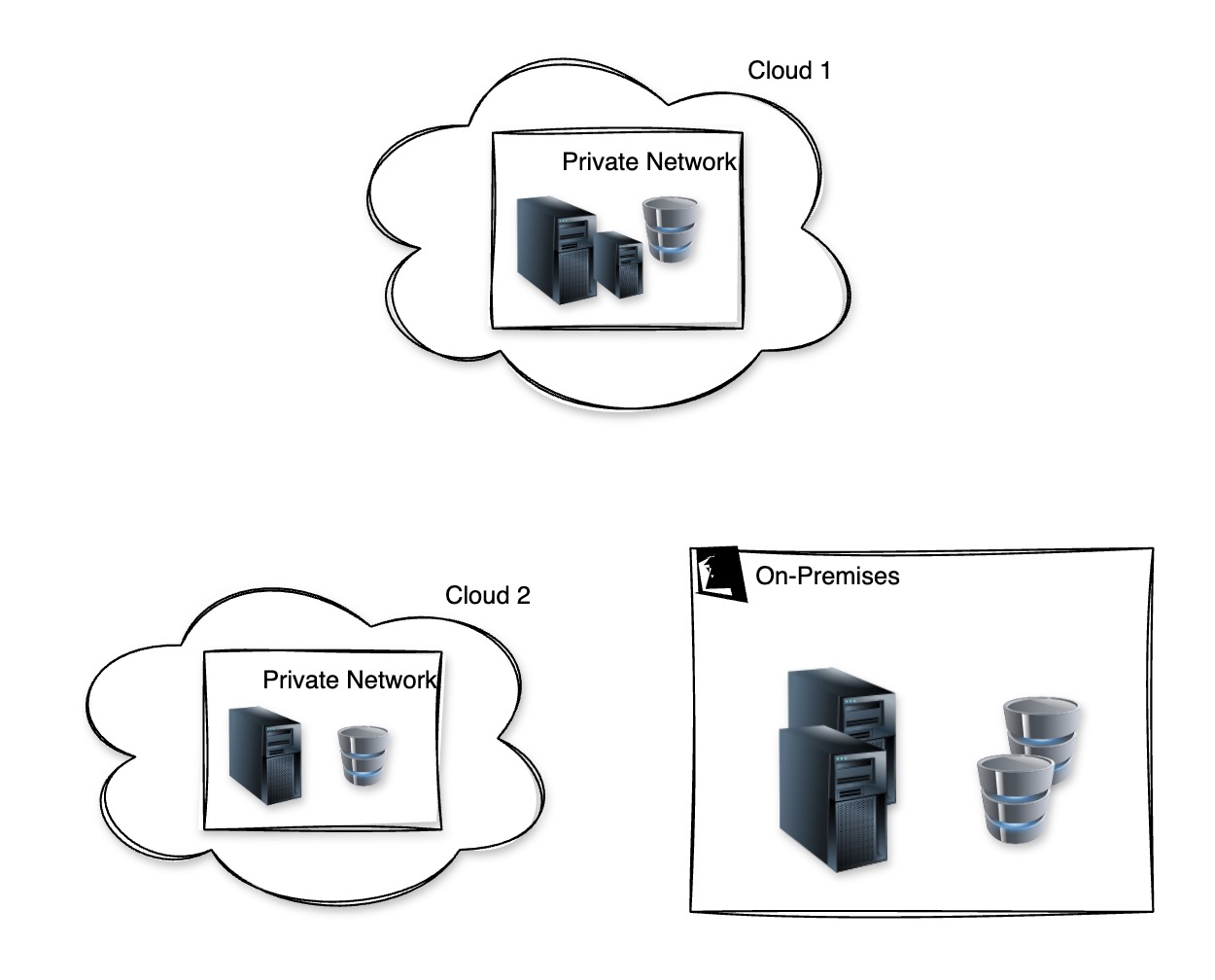
1. On-Premise
- What It Is: All infrastructure is owned and operated by you
- Where It Runs: In your own data center
- Pros:
- Full control over hardware and security
- No dependency on external providers
- Cons:
- Expensive upfront cost
- Hard to scale quickly
- Slower to adopt modern tools
2. Hybrid Cloud
- What It Is: A mix of on-prem + public cloud
- Where It Runs: Some workloads on-prem, some in cloud
- Pros:
- Flexibility to keep sensitive data on-prem
- Leverage cloud scale for web apps or backups
- Step-by-step cloud adoption
- Cons:
- Complex setup and integration
- Needs strong network and security architecture
- Harder to manage consistently
3. Multi-Cloud
- What It Is: Use of 2 or more public cloud providers (e.g., AWS + Azure) with or without on-premises
- Why Use It: Avoid vendor lock-in, optimize cost/performance
- Pros:
- Use best features from each provider
- Increase availability and redundancy
- Competitive pricing and negotiation
- Cons:
- Higher complexity in architecture and management
- Requires multi-skilled teams
- Data sync challenges
IaaS vs PaaS vs SaaS vs Serverless #
IaaS vs PaaS vs SaaS vs Serverless
- Scenario: You want to build, deploy, or use an application. How much do you want to manage yourself vs how much should the cloud provider handle for you?
- Goal: Choose the right cloud service model based on control, convenience, and responsibility.

IaaS (Infrastructure as a Service)
- Use only infrastructure from cloud provider
- Ex: Using VM service to deploy your apps/databases
- Cloud provider is responsible for:
- Hardware, Networking & Virtualization
- You are responsible for:
- OS upgrades and patches
- Application Code and Runtime
- Configuring load balancing
- Auto scaling
- Availability
- etc.. ( and a lot of things!)
- Examples:Amazon EC2, Azure Virtual Machines, Google Compute Engine
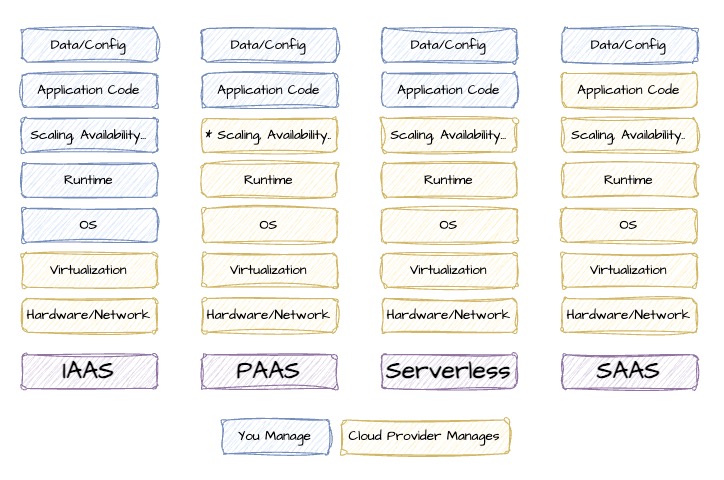
PaaS (Platform as a Service)
- Use a platform provided by the cloud
- Cloud provider is responsible for:
- Hardware, Networking & Virtualization
- OS (incl. upgrades and patches)
- Application Runtime
- Auto scaling, Availability & Load balancing etc..
- You are responsible for:
- Configuration (of Application and Services)
- Application code (if needed)
- Cloud provider is responsible for:
- Examples:
- Compute: AWS Elastic Beanstalk, Azure App Service, Google App Engine
- Databases: Relational (Amazon RDS, Google Cloud SQL, Azure SQL Database etc)
- And a lot of others!
SaaS (Software as a Service)
- Centrally hosted software (mostly on the cloud)
- Offered on a subscription basis (pay-as-you-go)
- Examples:
- Email, calendaring & office tools (such as Outlook 365, Microsoft Office 365, Gmail, Google Docs)
- Customer relationship management (CRM), enterprise resource planning (ERP) and document management tools
- Cloud/Service provider is responsible for:
- OS (incl. upgrades and patches)
- Application Runtime
- Auto scaling, Availability & Load balancing etc..
- Application code and/or
- Application Configuration (How much memory? How many instances? ..)
- Customer is responsible for:
- Configuring the software!
Serverless
- What do we think about when we develop an application?
- Where to deploy? What kind of server? What OS?
- How do we take care of scaling and availability of the application?
- What if you don't worry about servers and focus ONLY on code?
- Enter Serverless
- Remember: Serverless does NOT mean "No Servers"
- Enter Serverless
- Serverless for me:
- You don't worry about infrastructure (ZERO visibility into infrastructure)
- Flexible scaling and automated high availability
- Most Important: Pay for use
- Ideally ZERO USAGE => ZERO COST
- You don't worry about infrastructure (ZERO visibility into infrastructure)
- You focus on code and the cloud managed service takes care of all that is needed to scale your service/code to serve millions of requests!
- And you pay for usage and NOT servers!
Serverless Examples
| Category | AWS | Azure | Google Cloud |
|---|---|---|---|
| Compute | AWS Lambda, AWS Fargate | Azure Functions, Azure Container Apps | Cloud Functions, Cloud Run |
| Storage | Amazon S3 | Azure Blob Storage | Cloud Storage |
| Databases and a lot of others | .. | .. | .. |
What is Virtualization? #
What is Virtualization?
- Scenario: In the past, running one app meant using one full physical server—even if the app used only 10% of the CPU. This wasted resources and increased costs.
- Goal: Use one physical server to run multiple virtual systems efficiently.
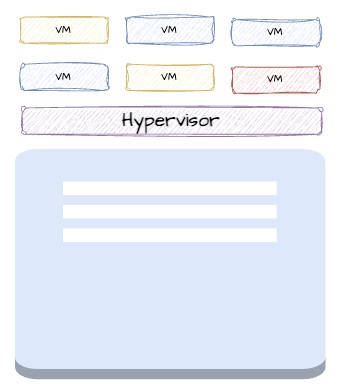
Virtualization – The Basics
- Definition: Creating virtual versions of computing resources (like virtual machines) on a single physical server
- How It Works:
- A Hypervisor (software layer) sits on top of the physical server
- It splits the hardware into multiple Virtual Machines (VMs)
- Each VM acts like a separate computer with its own OS and applications
Why Use Virtualization?
- Better Utilization: Run many apps on fewer servers
- Cost Efficiency: Lower hardware and maintenance costs
- Flexibility: Quickly create, start, stop, or move VMs
- Isolation: Each VM is independent – safer and easier to manage
Foundation of Cloud Computing
- Public cloud providers (like AWS, Azure, Google Cloud) use virtualization to offer shared infrastructure
- You get a VM (virtual server), not a dedicated physical machine
- Containers, serverless functions and almost everything you see in the cloud are built on top of virtualization layers
How can you create Virtual Machines in the cloud? #
What is a Virtual Machine (VM)?
- Definition: A software-based (virtual) machine running inside a physical server
- Goal: Run multiple isolated systems on a single physical machine
- Benefit: Full control over OS, software, and security settings while sharing hardware

Cloud VMs are Flexible
- Choose What You Need: Select CPU, RAM, storage, and OS
- Multiple OS Options: Run Linux, Windows, or custom images
- Custom Machine Types: Match VMs to your workload and budget
Cloud VMs are Scalable
- Scale Up/Down: Change number of VMs based on traffic
- Auto Scaling: Add or remove VMs automatically
- Global Deployment: Launch in regions close to users
Cloud VMs are Cost Efficient
- Pay-As-You-Go: Billed by second, minute, or hour
- Reserved/Spot Pricing: Save cost with long-term reservations or using spare capacity
- Release When Not Needed: Reduce waste by releasing unused VMs
Reviewing Important Virtual Machine Concepts
| Feature | Explanation | AWS | Azure | Google Cloud |
|---|---|---|---|---|
| Managed Service | Create VMs | Amazon EC2 (Elastic Compute Cloud) | Azure Virtual Machines | Google Compute Engine |
| Image | What OS and software should be on the instance? | AMI (Amazon Machine Image) | VM Image | Image |
| Instance Family | Type of hardware: General, High CPU or High Memory or Storage Optimized | Instance Family | VM Series | Machine Family |
| Instance Size | Amount of vCPU and memory | Instance Type - t3.micro, m5.large | VM Sizes - B2s,B2ms .. | Machine Type - e2-medium, n2-standard-2 |
| Attached Disks | Block storage volumes for VMs | Elastic Block Store | Managed Disks | Persistent Disks |
Networking for VMs
| Feature | Explanation | AWS | Azure | Google Cloud |
|---|---|---|---|---|
| Permanent Internal IP Address | Permanent Internal IP Address that does not change during the lifetime of an instance | Private IP Address | Private IP Address | Internal IP Address |
| Ephemeral External IP Address | Ephemeral External IP Address that changes when an instance is stopped | Public IP Address | Public IP Address | External or Ephemeral IP Address |
| Permanent External IP Address | Permanent External IP Address that can be attached to a VM | Elastic IP Address | Static IP Address | Static IP Address |
| Firewall Rules | Control incoming/outgoing traffic | Security Group | Network Security Group (NSG) | Firewall Rules |
Managing Costs
| Feature | Explanation | AWS | Azure | Google Cloud |
|---|---|---|---|---|
| Cheaper temp instances | Create cheaper, temporary instances for non critical workloads | Spot instances | Spot VMs | Spot VMs |
| Reservations/Usage Discounts | Reserve compute instances ahead of time/Get discounts for using resources for long periods of time | Reserved instances | Reserved instances | Committed use discounts/Sustained use discounts |
| Reservation based on dollar amounts | Reserve based on monetary commitment ($100 per hour, for example) | AWS Savings Plans | Azure Savings Plan for Compute | - |
| Managing Budget | Budget Management | Budget alerts | Budget alerts | Budget alerts |
What are some of the architectural aspects to think about when creating virtual machines in the cloud? #
- Scaling
- Resiliency
- Observability
- Tenancy
What is Scaling?
- Scenario: Your app is growing – more users, more traffic, more data. One server is not enough anymore. You need to scale.
- Scaling: Expanding system capacity to handle more load.
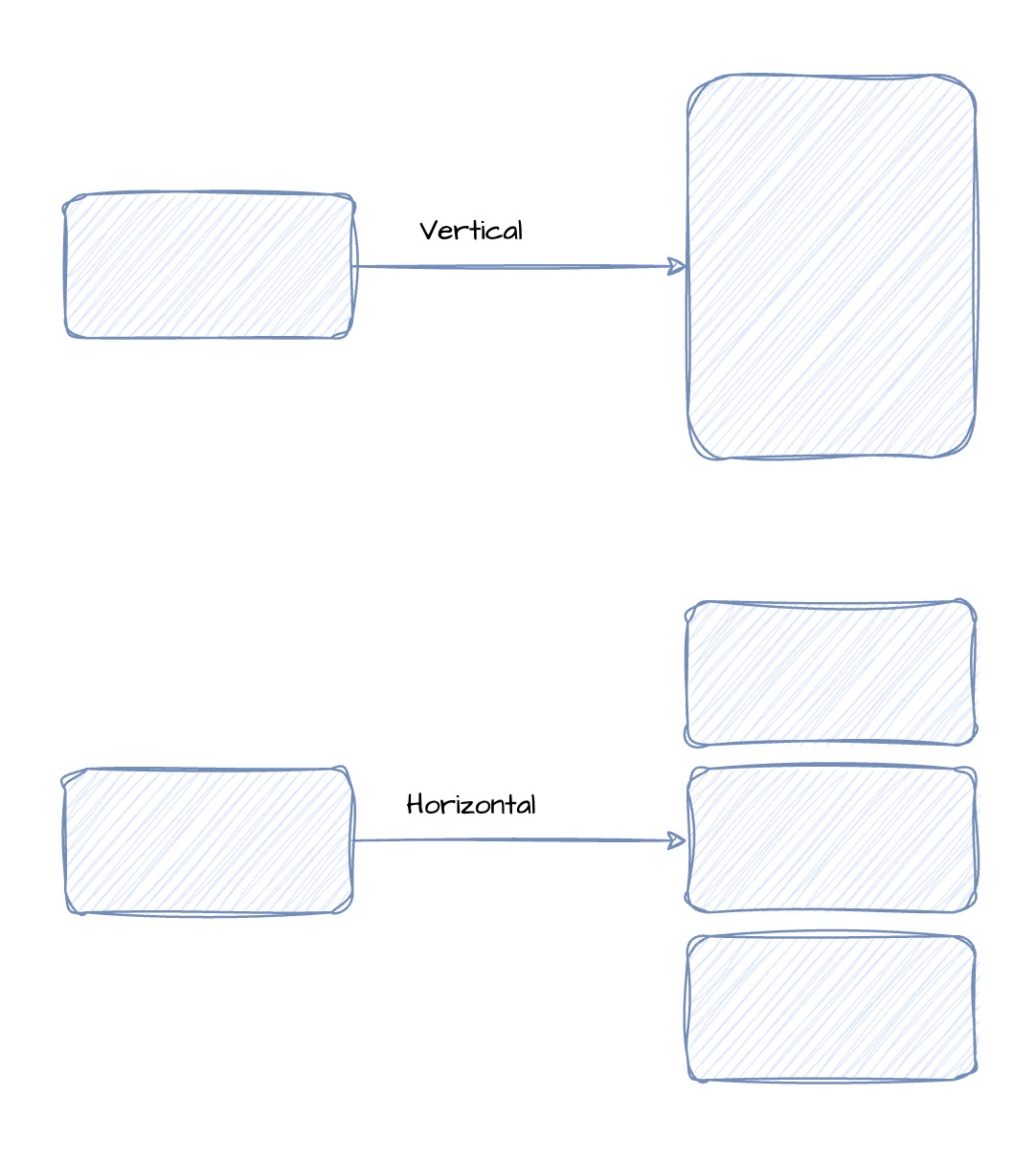
Vertical Scaling (Scale Up)
- What It Is: Increase the power of a single machine
- More CPU, RAM, disk, or network
- Example: Upgrade a small server to a large one
- Benefits:
- Simple and fast to implement
- No code changes or architectural updates
- Limitations:
- Hardware has physical limits
- Downtime may be required
- Higher cost for high-end machines
Horizontal Scaling (Scale Out)
- What It Is: Add more machines or instances to share the load
- Run multiple copies of the application or database
- Benefits:
- Improved availability and fault tolerance
- Scale without downtime
- Challenges:
- Needs infrastructure like load balancers
Horizontal Scaling in Practice
- Auto Scaling: Automatically add or remove instances based on traffic
- Load Balancing: Evenly distribute requests across all instances
- Deployment Models:
- Within a single zone
- Across multiple zones
Resiliency for Virtual Machines and Load Balancing (Cloud Neutral)
- Scenario: You're running your application on virtual machines. What happens if a VM crashes, a zone goes down, or your app faces a sudden surge in traffic?
- Goal: Design your architecture to handle failures gracefully and continue to serve users reliably — that’s resiliency.
What is Resiliency?
- Definition: The ability of a system to provide acceptable performance and recover quickly even when parts of the system fail
- Why It Matters:
- Failures are inevitable (hardware, software, network)
- Users expect high uptime and reliability
Building Resilient Architectures
| Design Element | Purpose |
|---|---|
| Auto-Healing Groups / Instance Groups | Automatically detect and replace failed VMs |
| Load Balancing | Distribute traffic across healthy instances to ensure availability |
| Multi-Zone Deployment | Avoid single point of failure by spreading instances geographically |
| Health Checks | Detect and route traffic only to healthy instances |
| Disaster Recovery Planning | Keep up-to-date VM images and backups in multiple regions or zones |
Creating Multiple VMs
| Feature | Explanation | AWS | Azure | Google Cloud |
|---|---|---|---|---|
| VM Templates | Templates to simplify creation of Virtual Machines | Launch Templates | - (ARM Templates) | Instance templates |
| Auto Scaling | Automatically add or remove VMs based on usage (load, time, events) | Auto Scaling Group (ASG) | Virtual Machine Scale Sets (VMSS) | Managed Instance Groups (MIGs) |
| Load Balancing | Load Balancing | Elastic Load Balancer | Azure Load Balancer (& others) | Cloud Load Balancing |
| VM Management | Simplify management (software, OS patches etc) of 1000's of Virtual Machines | Systems Manager | Azure Update Manager | VM Manager |
Observability
- Collect metrics like CPU, memory, network usage, disk I/O
- Capture application and system logs for troubleshooting
- Set alerts for failures
| Question | AWS | Azure | Google Cloud |
|---|---|---|---|
| How do you monitor metrics around your applications | Amazon CloudWatch | Azure Monitor | Cloud Monitoring |
| How do you manage application and service logs? | Amazon CloudWatch Logs | Azure Monitor Logs | Cloud Logging |
| How do you trace requests across applications and services? | AWS X-Ray | Azure Application Insights Distributed Tracing | Cloud Trace |
Why Tenancy Matters?
- Scenario: You’re deploying an app with licensing restrictions or regulatory needs. You need control over the hardware it runs on.
- Tenancy: Determines who shares the physical server where your virtual machines (VMs) run.

Shared Tenancy (Default)
- What It Is: Multiple customers’ instances run on the same physical server
- Limitations:
- Not suitable for strict compliance or licensing needs
Dedicated Hosts
- What It Is: Entire physical server reserved for your use
- Benefits:
- Required for some licensing models (e.g., Windows Server, SQL Server)
- Helps meet compliance and audit requirements
- Limitations:
- More expensive
| Feature | Explanation | AWS | Azure | Google Cloud |
|---|---|---|---|---|
| Host dedicated to one customer | Physical hosts dedicated to one customer | EC2 Dedicated Hosts | Azure Dedicated Hosts | Sole-tenant nodes |
What are the Compute Options in Cloud? #
| Category | AWS | Azure | GCP |
|---|---|---|---|
| IaaS | Amazon EC2 | Azure VMs | Google Compute Engine |
| PaaS | AWS Elastic Beanstalk | Azure App Service | App Engine |
| FaaS - Serverless | AWS Lambda | Azure Functions | Cloud Functions |
| CaaS - Serverless | AWS Fargate | Azure Container Instances | Cloud Run, GKE Autopilot |
| CaaS - Kubernetes | Amazon EKS | Azure Kubernetes Service, Azure Red Hat OpenShift | Google Kubernetes Engine |
| CaaS - Custom | Amazon ECS | ||
| Multi-cloud Container services | Amazon EKS Anywhere | Azure Arc-enabled Kubernetes | Google Kubernetes Engine (GKE) Enterprise edition |
| VMWare | VMware Cloud on AWS | Azure VMware Solution | VMware Engine |